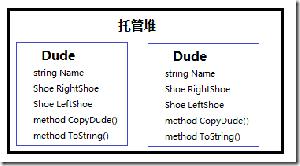PHP行为型模式之责任链模式
浏览:243日期:2023-07-08 15:16:13
目录
- 前言
- 责任链模式的优点
- 责任链模式的实现
- 责任链模式的使用
- 总结
前言
责任链模式(Chain of Responsibility Pattern)是什么?
责任链模式是一种行为型模式,它允许多个对象将请求沿着处理链传递,直到有一个对象处理该请求为止。这种类型的设计模式属于行为型模式,它允许多个对象以链式方式处理请求,避免了请求发送者和接收者之间的耦合关系。
责任链模式的优点
- 责任链模式可以将请求的发送者和接收者解耦,让请求在处理链中自动传递;
- 责任链模式可以动态地组合处理链,在不同的场景中使用不同的处理链;
- 责任链模式可以对请求进行过滤和处理,增强系统的灵活性和可扩展性。
责任链模式的实现
在 PHP 中,我们可以使用以下方式来实现责任链模式:
<?php
// 抽象处理器类
abstract class Handler
{
protected $successor;
public function setSuccessor(Handler $successor)
{
$this->successor = $successor;
}
abstract public function handleRequest($request);
}
// 具体处理器类A
class ConcreteHandlerA extends Handler
{
public function handleRequest($request)
{
if ($request == "A") {
echo "ConcreteHandlerA handles the request.\n";
} else if ($this->successor != null) {
$this->successor->handleRequest($request);
}
}
}
// 具体处理器类B
class ConcreteHandlerB extends Handler
{
public function handleRequest($request)
{
if ($request == "B") {
echo "ConcreteHandlerB handles the request.\n";
} else if ($this->successor != null) {
$this->successor->handleRequest($request);
}
}
}
// 客户端代码
$handlerA = new ConcreteHandlerA();
$handlerB = new ConcreteHandlerB();
$handlerA->setSuccessor($handlerB);
$handlerA->handleRequest("A");
$handlerA->handleRequest("B");
在上面的实现中,我们首先定义了一个抽象处理器类,并在具体处理器类A和具体处理器类B中实现了它。然后,我们在客户端代码中实例化了具体处理器类A和具体处理器类B,并通过设置它们的后继处理器来组成一个处理链。最后,我们通过调用处理链的方法来处理请求。
责任链模式的使用
<?php
$handlerA = new ConcreteHandlerA();
$handlerB = new ConcreteHandlerB();
$handlerA->setSuccessor($handlerB);
$handlerA->handleRequest("A");
$handlerA->handleRequest("B");
在上面的使用中,我们实例化了具体处理器类A和具体处理器类B,并通过设置它们的后继处理器来组成一个处理链。然后,我们通过调用处理链的方法来处理请求。
总结
责任链模式是一种非常常见的行为型模式,它允许多个对象以链式方式处理请求,避免了请求发送者和接收者之间的耦合关系。在实际开发中,我们可以根据具体的需求,选择不同的处理器对象来组合成一个处理链,从而实现对系统的优化。
到此这篇关于PHP行为型模式之责任链模式的文章就介绍到这了,更多相关PHP责任链模式内容请搜索以前的文章或继续浏览下面的相关文章希望大家以后多多支持!
标签:
PHP
上一条:PHP结构型模式之代理模式下一条:php面向对象程序设计介绍

 网公网安备
网公网安备